Germana and St. Camillus: an Infinite Love
In the first letter there is a final reference, but there would later be many more, which relate to her love for the Camillian cross. In the post scrip-tum Germana writes: ‘So just as one day, when I reached the age of twenty (25 May…like O[ur] H[oly] Father [Camillus], Fr. Ernesto MI gave me the Camillian red cross, as large as that of the pos-tulands, so one day I expect from you the large cross of the women novices and then that of the professed…Do not forget, please! I will be a child as long as you want but please know that small red cross of mine has required sacrifices from me! If nothing else it is a vessel: and I will never have it as they do! Fiat! Make me therefore the first per-fect Daughter of St. Camillus, and if this seems to you to be a whim or a girlish caprice, well, forgive me! (10 January).
In her letter of 20 February there are twelve questions or facts that she refers to Fr. Vanti and which concern both her specific studies on Camil-lus, the Order, and the religious poetry of Fr. Palma, but the question that she holds dear she expresses immediately. ‘In Milan, at the Major Hospi-tal, there are four niches for St. Ambrose and St. Charles, with a third, perhaps, for the Blessed 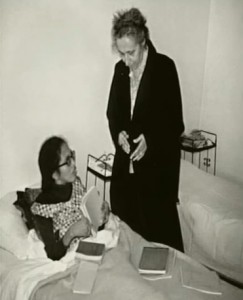 Gerosa Capitanio, given that the sisters that worked in the hospital were those of the Child Mary (founded by the same Blessed); it seems that the fourth niche was for four statues of Milanese archbishops (‘but I have not found more than 2-3…however we will see!’). Bascapè suggested that Fr. Vanti wrote to the director of the hospital, drawing attention to the merits and the action St. Camillus in Milan and thus affirming that one could ask for a statue of him to be placed in the fourth niche or an altar (or at least a stained glass given that of the three stained glass windows in the Church of Ca’ Grande one is dedicated to Our Saint. In the meantime the personality and the ac-tion of our Saint should be made known about through small images, prayers and publications about his activities, especially in Milan’. Good relations should be established with the Curia, and to this end the usual Bascapé intervened in favour of Camillus and intended to make concrete proposals to the Archbishop, Cardinal Schuster,4 who had previously recognised the worthy work of Camillus in Milan even though, Germana observed, the same Cardinal ‘remembered this, unfortunately, a little late, given that still three days ago – when Bascapè suggested St. Camillus for the fourth statue to be placed in the fourth niche on the faQade of the chapel of the new hospital – the Archbishop, al-though smiling, observed: “Well, between St. Camillus and the Archbishop’s Curia there are ac-counts to be settled…!”. As regards a life of St. Camillus which Germana always defined as the ‘Vitina’ (little life), it was already ready with the printers of the Regalità and was published a month before the feast of St. Camillus.5 She was happy because, as she wrote, ‘we are certain that at least 700 copies have been booked by the nurses of the Major Hospital and – if God is willing and blesses what I have done in His name – many other copies will circulate amongst the nurses and the patients. Well? This, too, I have placed in the hands of the beloved Saint! He can take care of things!’ As re-gards the name of the author, someone had pro-posed putting ‘Sr. Germana M.I.’; Germana herself teased herself: ‘anything but a sister, is that not true? In reality I have failed totally, I really seem to myself to be a wrong note, and not to be myself.. .But perhaps it is better that way’. And she went on: ‘I hope that the name will come out, I will be engaged in anonymity, is that alright? M.I. with-out a name, I must be, me!’(20 February).
Gerosa Capitanio, given that the sisters that worked in the hospital were those of the Child Mary (founded by the same Blessed); it seems that the fourth niche was for four statues of Milanese archbishops (‘but I have not found more than 2-3…however we will see!’). Bascapè suggested that Fr. Vanti wrote to the director of the hospital, drawing attention to the merits and the action St. Camillus in Milan and thus affirming that one could ask for a statue of him to be placed in the fourth niche or an altar (or at least a stained glass given that of the three stained glass windows in the Church of Ca’ Grande one is dedicated to Our Saint. In the meantime the personality and the ac-tion of our Saint should be made known about through small images, prayers and publications about his activities, especially in Milan’. Good relations should be established with the Curia, and to this end the usual Bascapé intervened in favour of Camillus and intended to make concrete proposals to the Archbishop, Cardinal Schuster,4 who had previously recognised the worthy work of Camillus in Milan even though, Germana observed, the same Cardinal ‘remembered this, unfortunately, a little late, given that still three days ago – when Bascapè suggested St. Camillus for the fourth statue to be placed in the fourth niche on the faQade of the chapel of the new hospital – the Archbishop, al-though smiling, observed: “Well, between St. Camillus and the Archbishop’s Curia there are ac-counts to be settled…!”. As regards a life of St. Camillus which Germana always defined as the ‘Vitina’ (little life), it was already ready with the printers of the Regalità and was published a month before the feast of St. Camillus.5 She was happy because, as she wrote, ‘we are certain that at least 700 copies have been booked by the nurses of the Major Hospital and – if God is willing and blesses what I have done in His name – many other copies will circulate amongst the nurses and the patients. Well? This, too, I have placed in the hands of the beloved Saint! He can take care of things!’ As re-gards the name of the author, someone had pro-posed putting ‘Sr. Germana M.I.’; Germana herself teased herself: ‘anything but a sister, is that not true? In reality I have failed totally, I really seem to myself to be a wrong note, and not to be myself.. .But perhaps it is better that way’. And she went on: ‘I hope that the name will come out, I will be engaged in anonymity, is that alright? M.I. with-out a name, I must be, me!’(20 February).
The last letter that we have is dated 23 March 1937, with a note on the time of composition – 22.00. Germana had important news which had to be com-municated immediately: ‘Father Teacher, the fourth statue in the fourth niche etc. was decided upon yes-terday by Card [inal Schuster]: ‘St. Camillus!’, and it will be in the company of St. Ambrose, St. Charles and St. Galdino: in good company therefore! I am very happy about this: this is the first news for you, Father Teacher!’ The letter was continued on 27 March at 6.00 and her joy emerges in the first few lines: ‘the first step has been taken: St. Camillus will be in his niche and we will ensure that everyone loves him!’. Germana then refers to how, once again in re-sponse to a suggestion made by Bascapè, she in-tends to act by obtaining small images with a prayer to St. Camillus with a brief reference to his life so that nurses can already have an initial idea about the saint and his work, in particular in Milan. Another request made to Fr. Vanti is to have ‘2-3 holographs of the saint, once again for nurses, to be framed and hung in their common room, in old people’s homes, etc.’
Even though Bascapè encouraged her to act, in all of this Germana had more than one doubt about her own activities in favour of St. Camillus and his work: ‘Bascapè is active but.. .but what should I do?’ Indeed she was afraid of interfering in the activities of the Camillians or of generating contestations. In-deed, ‘Here our people do not know anything: and perhaps it is better that way. When indirectly they come to know about something they talk about it and then I become disheartened, I would like to surren-der because I seem to be an outsider, a person in-truding into the Work, and it is as if I was invading an-other person’s terrain’. And once again she express-es her wishes: ‘I would need the support of one of our people here; a person who works with me and balances my activities’, and she then goes on con-versing with her teacher: ‘Does it not seem to you rather risky that I who know nothing, not being even a nurse, work here in Milan in a field that belongs ex-clusively to a Camillian’.6 She then says how various people would like to see, at least every now and then, ‘a red cross, a Camillian, at least to visit a sick person’; in addition she refers to the priests of the hospital ‘who would be happy to see the nurses unit-ed under the guidance of St. Camillus’, and she then addresses a supplication to her spiritual director: ‘Look for God’s will as regards me, and what should my action and activity be to serve the Order. And re-member that.. .I have taken a vow of blind obedi-ence, and that therefore you can command me’.
At this point a ‘surprise’, which seems to me to be profoundly Camillian, enters the letter: ‘I’ll stop here: I have to go to the hosp[ital] of the Fatabene-fratelli: every morning, before Communion, I go to my sick women: this is my preparation! Father Teacher, when can I be MI? How many years will still have to pass? Prepare me for this and make me worthy’.
The letter then continues ‘ex Universitate, h. 111/2’ with information to her correspondent on her plans for a degree. The university assistant who helped her in her work had recognised that the task was vast and very interesting and thus urged her to continue given that ‘if a student can write
such a thesis, I greatly love the Order’, and Germana comments: ‘Greatly? Yes indeed, Father Teacher, and only God knows how much!’
At the end of this letter there is an account of a significant episode, a possible visit of the Superior General who was in Milan, and Germana asks for advice: ‘Tell me, Father, would it possible to greet our Superior General? I do not know, I do not dare to do this: I feel very shy with Fr. Rubini and at the same time very spontaneous; and I do not dare, because I know that I would not know how to tell him of the good that ties me to the Order, the de-votion that I feel’, and she goes on: ‘it seems to me that at any moment that he could rightly say to me that I have nothing to do with this, that I am singing the wrong notes, that I am deceiving myself about being an MI’, and for this reason she considers herself rather strange: ‘What a strange little woman I am, don’t you think Father? I lose myself in little things rather than working to prepare my-self! But you will forgive me, you know, because af-ter all if I do not think clearly it is specifically be-cause of the good that I feel for the Order – in the nightmare of being specifically a useless and un-faithful servant, not only crushed outside but…’, and here German ends with a ‘That’s enough’.
Some Short Observations
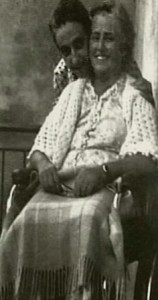 The letters of Germana that we have in the gen-eral archive are extremely valuable both from the point of view of evidence and because of their con-tents. These are personal texts written by Germana during the initial period of her ‘idea’ regarding a Camillian lay vocation lived out by serving the sick. A vocation, therefore, lived not in a convent but in the world and in a certain sense nearer to people.
The letters of Germana that we have in the gen-eral archive are extremely valuable both from the point of view of evidence and because of their con-tents. These are personal texts written by Germana during the initial period of her ‘idea’ regarding a Camillian lay vocation lived out by serving the sick. A vocation, therefore, lived not in a convent but in the world and in a certain sense nearer to people.
The texts I have quoted – very few in number compared to the very large number to be found in these very long letters – indicate a profound deci-sion to want to follow the spirit of St. Camillus and engage in service to the Order that he founded.
The character that emerges from these lines is that of a person who knows where she wants to go but who remains troubled by the difficulties she is encountering with her family and elsewhere. But above all because she feels ‘unworthy’ of a work that she sees as being beyond her strength. Hence her humble request for forgiveness for her impulsive character and her search for help through advice and above all through personal prayer and the prayers of other people.
Germana in these texts is like the person who has found a valuable treasure and for this reason everything else takes second place while trust in
God and St. Camillus never fails, and in them and with them she finds strength and courage to continue on a journey which she began with so many difficulties.
It would be worthwhile examining the role of the various Camillians that Germana refers to in this correspondence.
These five letters to Fr. Mario Vantri are very lit-tle compared to everything that has been produced through the writings of this woman pioneer of the lay world, but the details that are present make us exclaim with joy: Germana…you are truly great!
Fr. Eugenio Sapori
P.S. For information on the institute founded by Germana see the internet web site: www.ist-sec-mdi-cristosperanza.org



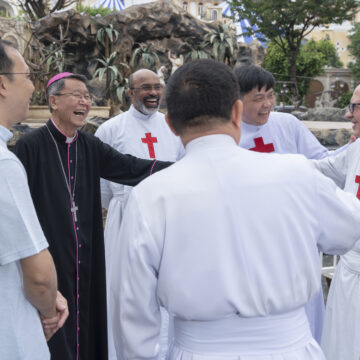

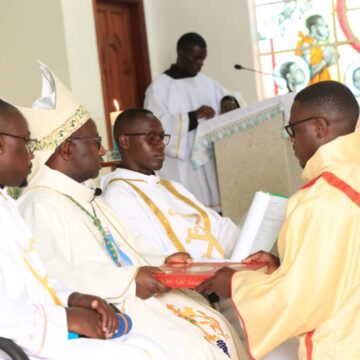
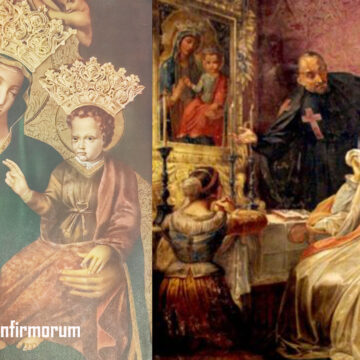

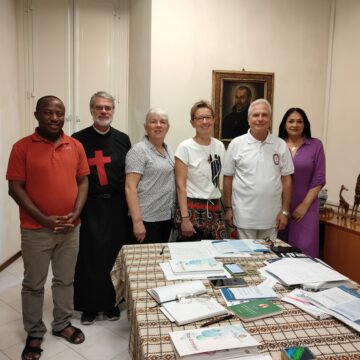

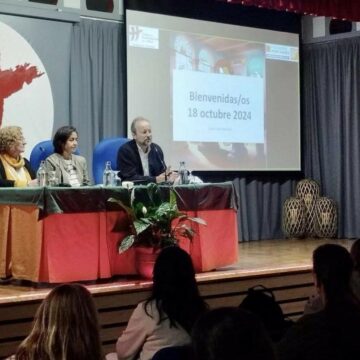
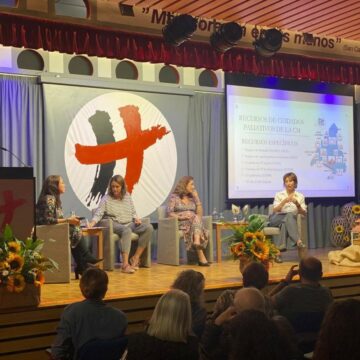

Camillians on Facebook
Camillians on Twitter
Camillians on Instagram